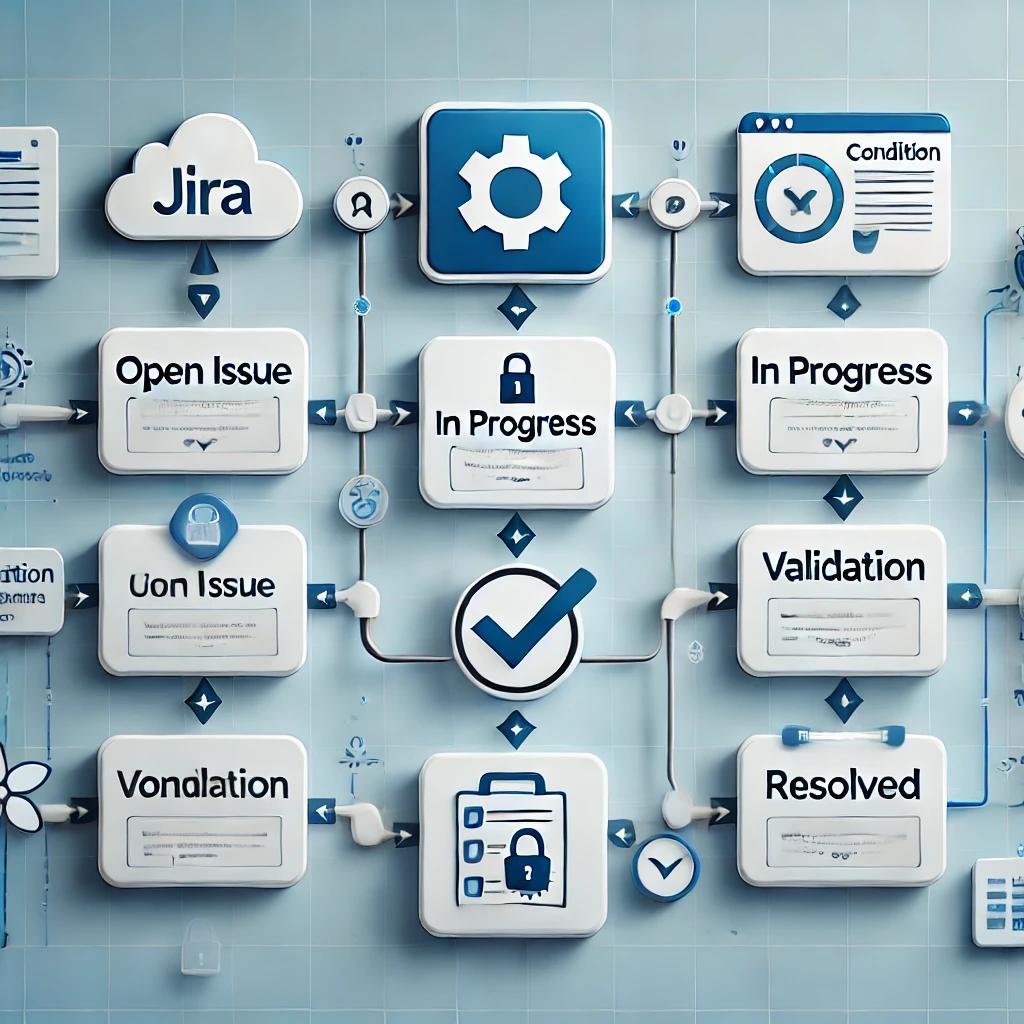
Jira offers extensive customization options that help tailor workflows to your team's needs. Two commonly used features are Validators and Conditions. While they may seem similar, they serve distinct purposes. Let’s explore when to use each and how they can enhance your Jira workflows.
Understanding Conditions
Conditions in Jira determine whether a transition is visible or accessible to a user based on specific criteria. For instance, if a field is not filled in, you can use a condition to hide the transition entirely.
Use Case: Restricting Access
Imagine a bug resolution process where:
- Only the project lead or manager can close an issue.
- If the required field (e.g., "Root Cause Analysis") isn’t filled, the transition to "Resolve" is hidden.
Pros:
- Prevents users from seeing transitions they cannot use.
- Useful for role-based permissions (e.g., only a lead can approve a task).
Cons:
- Requires user training to explain why the transition is unavailable.
- Can lead to confusion for users who don’t understand the missing transition.
Understanding Validators
Validators ensure that specific conditions are met before a transition is completed. Unlike conditions, validators do not hide the transition but enforce rules when users attempt to execute it.
Use Case: Ensuring Required Fields Are Filled
In the same bug resolution process:
- The "Resolve" button is always visible.
- When clicked, Jira checks if the required field is filled in.
- If not, a message prompts the user to fill the field before proceeding.
Pros:
- Makes the process user-friendly by guiding users through requirements.
- Works seamlessly with transition screens, highlighting missing information in context.
Cons:
- Without a transition screen, errors might appear as popup messages, which can be less intuitive.
Best Practices: Validators vs. Conditions
- When to Use Conditions:
- To enforce role-based restrictions (e.g., only leads can close issues).
- To completely hide transitions that aren’t relevant to most users.
- When to Use Validators:
- To enforce process rules without hiding transitions.
- To guide users toward filling required fields or correcting errors.
- Combining Validators and Transition Screens:
- Use validators with transition screens for the best user experience.
- Add helper text or descriptions to fields to provide clear instructions (e.g., "This field is required before resolving the issue").
- Training and Documentation:
- Even with tools enforcing rules, user training is critical.
- Document the process in an accessible format and reiterate key points during training sessions.
Tips for Improving Workflow Adoption
- Helper Text and Field Descriptions:
Use custom field descriptions or message fields to inform users about requirements. For example:- "This field is required for bug resolution."
- Message Fields in Jira:
Leverage Jira's message fields to display reminders or instructions on specific screens or transitions. - Documentation and Communication:
Publish the workflow rules and provide training materials. Keep these resources easy to find for team members. - Iterative Training:
Regularly train users, especially when new validators or conditions are introduced.
Why Customization Matters
Jira’s customization capabilities are a game-changer. They allow you to tailor workflows, enforce business rules, and improve overall efficiency. Validators and conditions are small but powerful tools in this ecosystem. Used correctly, they enhance user experience and ensure compliance with organizational processes.
Thank you for reading!
Video Link : https://www.youtube.com/watch?v=ZML915pr858
